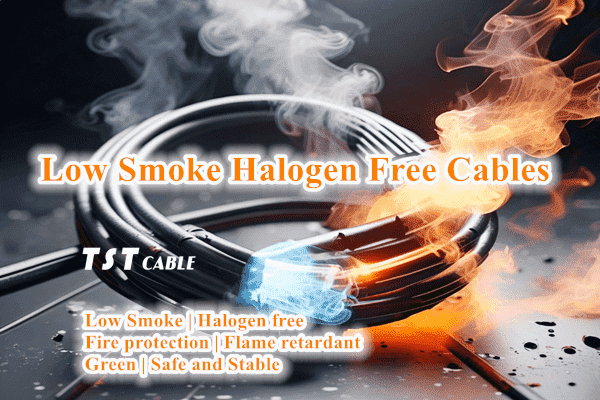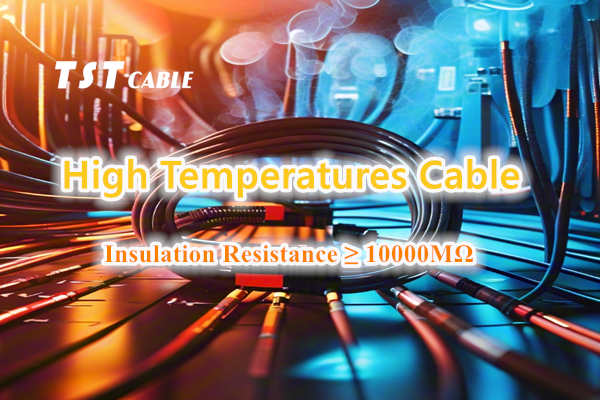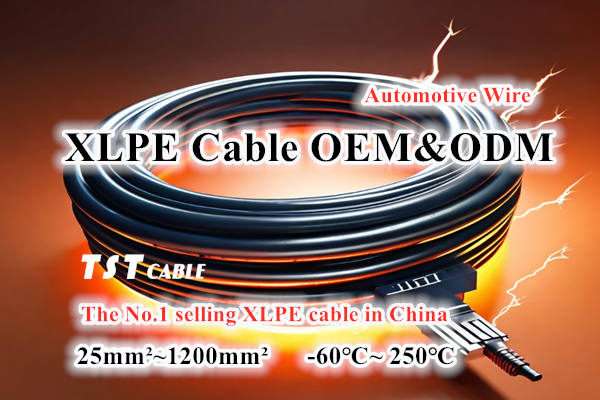
Cross linked cable refers to a kind of cable that uses physical or chemical methods to make longitudinal or transverse cross-linking between polymer molecules, so as to improve the heat resistance, cold resistance, flame retardancy, mechanical strength, aging resistance and electrical properties of the cable’s insulating medium and sheath material.
I. Application areas of cross linked cables:
Aerospace field: in aerospace equipment, cross-linked cables play an important role. It is widely used in satellites, space shuttles, rockets and other equipment due to its high temperature resistance, good fire resistance and strong radiation resistance. In these equipments, cross-linked cables are not only used to transmit data and signals, but also undertake the key task of transmitting high-voltage electrical energy.
Rail transportation field: With the rapid development of urban rail transportation, the performance requirements for cables are increasing. With its good fire resistance and excellent mechanical properties, cross-linked cable has become the preferred material for power transmission and control cables in urban rail transit. Cross-linked cables play an indispensable role in the drive system, signaling system, control system and so on.
Industrial field: In industrial production, cross-linked power cables are widely used in power transmission, distribution and power supply systems due to their characteristics of high temperature resistance, fire resistance, abrasion resistance and explosion resistance. Whether it is high-speed railroad, automobile manufacturing, shipbuilding or aircraft manufacturing and other industries, cross-linked cable is an important material to ensure production safety and stability.
Construction field: In the construction industry, cross-linked power cables are also widely used. Hospitals, airports, shopping malls, gymnasiums, schools and a large number of other places that use electricity need to use cross-linked power cables. In addition, due to its low power loss and excellent energy-saving performance, cross-linked cable is gradually becoming an important choice for green buildings.
Domestic electricity field: Cross-linked power cables also play an important role in domestic electricity consumption. It can be used for air conditioning power lines, lamps and lanterns wires, water heater power lines, etc., which not only ensures the electrical safety, but also makes the household electrical power more energy-saving.
Second, the production of cross-linked cable process
At present, the production of cross-linked cable process is mainly divided into three categories: peroxide chemical crosslinking, silane chemical crosslinking and irradiation crosslinking.
1, inert gas crosslinking (dry chemical crosslinking)
Inert gas cross-linking, that is, dry chemical cross-linking, using polyethylene insulation materials involved in peroxide crosslinking agent. After the extrusion of the conductor shield, insulation layer, insulation shield, through the high temperature, high pressure nitrogen sealed crosslinking tube to complete the crosslinking process. The method of heat transfer media for nitrogen, suitable for cross-linked polyethylene electrical function excellent, production planning up to 500KV level of high-voltage cable.
Common inert gas cross-linked cables are: YJV series, YJY series, flame retardant cross-linked series.
It should be noted that you need to check the technical specifications of the cable or consult the manufacturer to understand the specific crosslinking and performance characteristics, rather than relying solely on the model.
2、 Silane chemical crosslinking (warm water crosslinking)
Silane chemical cross-linking, i.e., warm water cross-linking, using polyethylene insulation materials involved in silane cross-linking agent. After the extrusion of the heterogeneous shielding layer, insulation layer, insulation shielding layer, the insulated wire core that has been cooled and loaded into the disk is immersed in 85-95 ℃ hot water for hydrolysis crosslinking. As wet crosslinking affects the water content in the insulation layer, the general maximum voltage level is only up to 10kV.
If the steam steamer crosslinking, the finished wire into the warehouse or steamer at an ambient temperature of 90 ℃ or more than 4-6 hours or so can be crosslinked.
Low-smoke halogen-free wires are made of silane self-crosslinking low-smoke halogen-free polyolefin cable material, which can be naturally crosslinked at natural ambient temperatures.
The following are some common models of silane chemically cross-linked cables:
Low-voltage silane cross-linked cable:
1) YJV: cross-linked polyethylene insulated PVC sheathed power cable
2) YJY: cross-linked polyethylene insulated polyethylene sheathed power cable
Medium voltage silane cross-linked cable:
(1) YJV22: cross-linked polyethylene insulated steel tape armored PVC sheathed power cable
(2) YJY23: cross-linked polyethylene insulated steel tape armored polyethylene sheathed power cable
Flame retardant silane cross-linked cable:
1)ZR-YJV:Flame-retardant cross-linked polyethylene insulated PVC sheathed power cable
2)ZR-YJY:Flame-retardant cross-linked polyethylene insulated polyethylene sheathed power cable
Fire-resistant silane cross-linked cable:
1)NH-YJV:Fire-resistant cross-linked polyethylene insulated PVC sheathed power cable
2)NH-YJY:Fire-resistant cross-linked polyethylene insulated polyethylene sheathed power cable
Low-smoke halogen-free silane cross-linked cable:
1)WDZ-YJY:Low-smoke-halogen-resistant cross-linked polyethylene insulated polyethylene sheathed power cable
2)WDZ-YJV:Low-smoke-halogen free flame retardant cross-linked polyethylene insulated PVC sheathed power cable
Aluminum alloy conductor silane cross-linked cable:
1)YJLHV:Aluminum alloy conductor cross-linked polyethylene insulated PVC sheathed power cable
(2) YJLHY: Aluminum alloy conductor cross-linked polyethylene insulated polyethylene sheathed power cable
3、Irradiation crosslinking (physical crosslinking)
Irradiation cross-linking, i.e. physical cross-linking, uses modified polyethylene insulating material. In the conductor shielding layer, insulation layer, insulation shielding layer after the extrusion, the cooled insulated wire core uniformly through the high-energy electron gas pedal irradiation scanning window to complete the crosslinking process.
Irradiation crosslinking cable does not participate in the crosslinking agent, crosslinking by high-energy electron gas pedal generated by the high-energy electron beam effectively penetrate the insulation layer, the energy conversion to produce crosslinking reaction.
Due to the high and uniform electron energy through the insulating layer, the formation of crosslink bonding high energy, good stability, showing excellent heat resistance.
However, due to the limitations of the gas pedal energy level, generally does not exceed 3.0Mev electron beam effective penetration thickness of 10mm or less, taking into account the geometric factors, the voltage level of the production cable can only reach 10kV, the advantage of 6kV or less.
Common irradiated cross-linked cable models include:
(1) WDZ-BYJ(F): irradiated cross-linked low smoke halogen free flame retardant polyethylene insulated cable.
(2) FZ-KYJV: irradiated cross-linked polyethylene insulated control cable.
(3)WDZ-KYJ(F):irradiated crosslinked low smoke halogen-free flame retardant control cable.
(4)WDZ-YJ(F)E:irradiated crosslinked low smoke halogen free flame retardant polyethylene insulated power cable.
High quality cross-linked polyethylene cable supplier TST CABLES
TST CABLES As a professional manufacturer and supplier of high quality cross-linked polyethylene cables, we are committed to producing high quality cross-linked polyethylene cables, also widely known as XLPE cables. We adopt advanced production process to ensure that each cross-linked polyethylene cable has excellent electrical performance and durability to meet the diversified needs of our customers. If you have needs and questions about cross-linked polyethylene cables welcome to contact us by email.
Also available in:
English





